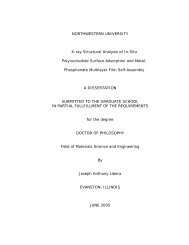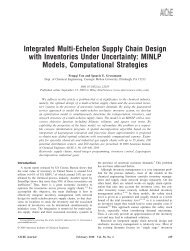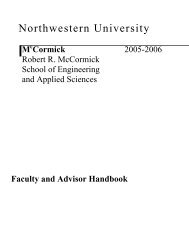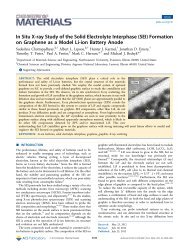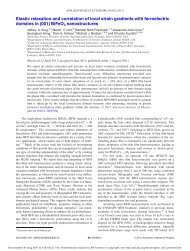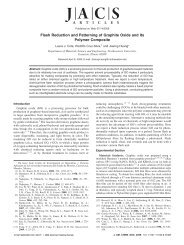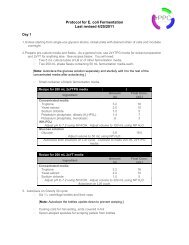Community-Based Operations Research - Humanitarian Logistics
Community-Based Operations Research - Humanitarian Logistics
Community-Based Operations Research - Humanitarian Logistics
You also want an ePaper? Increase the reach of your titles
YUMPU automatically turns print PDFs into web optimized ePapers that Google loves.
Johnson and Smilowitz: <strong>Community</strong>-<strong>Based</strong> <strong>Operations</strong> <strong>Research</strong>116 Tutorialsin <strong>Operations</strong><strong>Research</strong>, c○ 2007 INFORMSpoverty between 1990 and 2000 has been accompanied by stagnant or increasing levels ofpoverty concentration in the Northeastern and Western regions of the U.S., and increasingnumbers of poor families living in communities far away from the centers of America’scities (Joint Center for Housing Studies of Harvard University [47]). Housing mobility, i.e.,relocation of low-income families from distressed communities to more affluent, opportunityrichcommunities, has been one goal of affordable and subsidized housing policy.The Moving to Opportunity Program for Fair Housing (MTO), a national demonstrationintended to evaluate outcomes of housing mobility-program participants, offers the possibilityof significant improvements in living conditions and life outcomes for very low-incomefamilies who relocate using subsidies from the Housing Choice Voucher Program (HCVP).Over 6,000 families have participated in the experiment to date. Such areas for improvementsin life outcomes include: risk of criminal victimization, housing quality, and mentalhealth (U.S. Department of Housing and Urban Development [89]). MTO and HCVP isthe inspiration for development of a prototype spatial decision-support system (SDSS) forhousing-mobility counseling that might enable programs like MTO to be implemented ona large scale. This SDSS, called the Pittsburgh Housing eCounselor (http://www.housingecounselor.org)(Johnson [39]) is intended to assist housing counselors, clients, and landlordsin connecting low-income families to good-quality housing in opportunity-rich neighborhoods.This research confronts a number of gaps in current knowledge. First, there is littleresearch on the actual decision-making process by which housing mobility program participants(or HCVP clients) search for housing. Second, the extent to which public housingauthorities and other housing service agencies can assist creative decision making by clientswho may face multiple life challenges is limited by a lack of technical knowledge on informationtechnology (IT)-assisted decision making and the necessary IT infrastructure. Last,little is known about the ability of low-income families to frame and solve difficult problemsusing decision models and IT.The Pittsburgh Housing eCounselor guides users through the process of identifying candidatehousing units and neighborhoods, and ranking these candidate sites with two alternativemulticriteria decision models (MCDM). The eCounselor uses Keeney’s [56] value-focusedthinking method to enable clients and counselors together to identify characteristics of housingunits and neighborhoods that are important to the client and generate a subset ofhousing units and/or neighborhoods based on user-defined criteria. This process is representedby Figure 2, in which users start the search by identifying candidate neighborhoodsor, alternatively, candidate housing units, through appropriate queries and rank candidatedestinations using MCDM. Given these candidates for relocation, users choose acceptablehousing units or, alternatively, neighborhoods, thus creating a set of acceptable housingunits in acceptable neighborhoods suitable for site visits.Neighborhood characteristics are represented with spatial data describing demographic,employment, and housing characteristics of Allegheny County, PA and displayed in a Webbrowser. Figure 3 shows an example of this spatial data display, for fair housing complaintsin Allegheny County.Housing unit characteristics are represented with tabular data describing actual housingunits available for rent in the city of Pittsburgh and displayed in a Web browser similarly.Neighborhoods or housing units can be ranked using one of two MCDMs: eliminationby aspects (i.e., simple sort), in which users rank candidates in ascending order accordingto attribute values, or PROMETHEE (Brans and Vincke [15]), in which users specify theform of preference functions that measure the extent of a users’ preference for one alternativeover another with respect to the difference in performance of any pair of alternativesaccording to a single attribute. For example, a user could specify an increasing preferencefor one alternative over another as a linear function of the difference in crime rates of twoneighborhoods.



